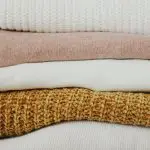Is your couch more than just a piece of furniture? It's a symbol of comfort, relaxation, and gathering with loved ones. However, it's also a magnet for dirt, bacteria, and odors. That's where a fabric sanitizer comes in.
In this guide, you'll discover the importance of fabric sanitizers for couches, common contaminants found on couches, how fabric sanitizers work, and the benefits of using them.
You'll also learn how to choose the right fabric sanitizer, application tips, and the frequency of fabric sanitization. Whether it's pet odors, food spills, or simply maintaining a clean and healthy environment, you'll find that a fabric sanitizer can help keep your couch fresh and inviting for all who gather around it.
Key Takeaways
- Fabric sanitizers are important for maintaining a clean and fresh living space, eliminating bacteria and odors.
- Regular use of fabric sanitizers helps remove allergens such as pet dander, dust mites, and pollen, promoting a healthier environment.
- Fabric sanitizers work by breaking down the cell walls of contaminants and leaving behind a sanitized surface.
- When choosing a fabric sanitizer, it is important to consider its effectiveness on different fabric types, its broad-spectrum formula, and its compatibility with various upholstery materials.
Importance of Fabric Sanitizers for Couches
If you have pets or frequently entertain guests, using a fabric sanitizer on your couch can help eliminate bacteria and odors, keeping your living space clean and fresh. Couch maintenance and cleaning are essential for a healthy living environment, especially if you or your family members suffer from allergies.
Fabric sanitizers play a crucial role in allergen removal and prevention, ensuring that your couch remains a safe and comfortable place to relax. Regular use of a fabric sanitizer can effectively remove allergens such as pet dander, dust mites, and pollen that may have accumulated on your couch. This is particularly beneficial for individuals with allergies or asthma, as it helps minimize potential triggers in the home environment.
In addition to allergen removal, fabric sanitizers also aid in preventing the buildup of bacteria and germs, promoting a hygienic living space. Incorporating fabric sanitizers into your couch maintenance routine can extend the lifespan of your furniture while creating a healthier indoor environment for you and your family. By addressing allergen removal and prevention, fabric sanitizers contribute to a cleaner, more comfortable living space.
Common Contaminants Found on Couches
Common contaminants found on couches can include pet dander, dust mites, and pollen, which can contribute to allergies and affect indoor air quality.
Pet dander, consisting of tiny flecks of skin shed by cats, dogs, and other animals, is a common allergen found on couches. Dust mites, microscopic bugs that thrive in warm and humid environments, often populate couches and can trigger allergic reactions. Additionally, pollen from outdoor sources can easily find its way onto your couch, potentially causing discomfort for those sensitive to it.
Regular fabric care and stain removal are essential to mitigate the presence of these common allergens. Vacuuming your couch regularly using a vacuum cleaner with a HEPA filter can help eliminate pet dander and dust mites. Furthermore, using a fabric sanitizer specifically designed to target allergens can aid in reducing the presence of these contaminants.
When addressing stains, it's important to use appropriate cleaning solutions and techniques to ensure that the fabric is thoroughly cleaned without causing damage. Regular maintenance and proper cleaning can help minimize the impact of these allergens and contribute to a healthier indoor environment.
How Fabric Sanitizers Work
To understand how fabric sanitizers work, consider the methods by which they target and eliminate common contaminants found on couches.
Fabric sanitizers 101: Understanding the process involves utilizing active ingredients that effectively eliminate bacteria, viruses, and other microorganisms from the fabric. These sanitizers work by breaking down the cell walls of these contaminants, rendering them inactive and unable to cause harm.
The science behind fabric sanitization lies in the formulation of these products, which often contain antimicrobial agents such as quaternary ammonium compounds or hydrogen peroxide. These active ingredients penetrate the fabric to reach and neutralize the contaminants embedded within.
Once the fabric sanitizer is applied and allowed to dry, it leaves behind a sanitized surface that's safe for use.
Understanding how fabric sanitizers work empowers you to make informed decisions about maintaining the cleanliness of your couch and other upholstered furniture. By utilizing fabric sanitizers, you can effectively eliminate harmful microorganisms and create a healthier living environment for you and your family.
Benefits of Using Fabric Sanitizers
Your couch's cleanliness and your family's health can greatly benefit from using fabric sanitizers. By incorporating fabric sanitizers into your cleaning routine, you can experience a wide range of advantages, from allergen control to prolonging the life of your upholstery. Take a look at the table below for a comprehensive overview of the benefits of using fabric sanitizers.
| Benefits | Description |
|---|---|
| Allergen control | Fabric sanitizers help eliminate allergens such as dust mites and pet dander, promoting cleaner air and reducing allergy symptoms. |
| Fabric longevity | By keeping your upholstery free from bacteria and mold, fabric sanitizers can extend the lifespan of your furniture, saving you money in the long run. |
| Eco-friendly options | Many fabric sanitizers are now available in eco-friendly formulations, reducing environmental impact while effectively sanitizing your furniture. |
| DIY solutions | For those who prefer natural alternatives, there are DIY fabric sanitizing solutions that can be easily made at home using simple ingredients, providing a cost-effective and chemical-free option. |
Incorporating fabric sanitizers into your cleaning routine can offer numerous benefits, including improved indoor air quality, prolonged furniture lifespan, and environmentally friendly options. Whether you choose commercial products or opt for DIY solutions, fabric sanitizers can play a crucial role in maintaining a clean and healthy home environment.
Choosing the Right Fabric Sanitizer
When choosing a fabric sanitizer, consider the different options available and how they may affect various materials.
It's important to assess the effectiveness of the sanitizer on the specific type of fabric you're dealing with.
Understanding these factors will help you make the best choice for keeping your couch and other upholstered furniture clean and sanitized.
Sanitizer Options for Fabrics
Consider using a fabric sanitizer with a broad-spectrum formula to effectively target a wide range of microbes that may be present on your upholstery.
When choosing a fabric sanitizer, look for options that are safe for use on various fabric types, such as cotton, linen, and polyester.
Additionally, consider a sanitizer that offers long-lasting protection to prevent the growth of bacteria, viruses, and fungi.
Lastly, opt for a fabric sanitizer that's easy to use and doesn't leave behind any residue or unpleasant odors.
Some natural alternatives, like essential oils, can also be effective fabric sanitizers, while DIY options using ingredients such as white vinegar and baking soda provide a cost-effective solution for sanitizing your upholstery.
Effectiveness on Different Materials
To ensure that your fabric sanitizer effectively targets a wide range of microbes on different upholstery materials, it's important to consider its compatibility and long-lasting protection.
When comparing the effectiveness of fabric sanitizers, consider the specific materials they're designed to treat. Some sanitizers might work well on certain fabrics, but not on others. For example, a sanitizer that's effective on leather may not be suitable for use on delicate silk or wool. It's crucial to choose a fabric sanitizer that's compatible with the specific materials of your upholstery to ensure optimal performance.
Additionally, look for a sanitizer that provides long-lasting protection to minimize the need for frequent reapplication, saving you time and effort while keeping your upholstery clean and germ-free.
Application Tips for Fabric Sanitizers
Ready to make sure your fabric sanitizer is working its best? Here are some key tips to keep in mind when applying your chosen product to your couch.
Proper Application Techniques
Have you thoroughly read the fabric sanitizer's label for specific application instructions? Proper application techniques are crucial for fabric care, stain removal, and fabric protection. To ensure effective results, follow these application tips for fabric sanitizers:
- Even Application: Apply the fabric sanitizer evenly across the entire surface of the fabric to ensure uniform coverage and protection.
- Blotting Technique: When treating stains, gently blot the affected area with the fabric sanitizer instead of rubbing it in, which can spread the stain and damage the fabric.
- Proper Drying: Allow the fabric to fully dry after applying the sanitizer, following the specific instructions on the label, to ensure that it effectively sanitizes the fabric without causing any damage.
Following these proper application techniques will help you achieve optimal results while maintaining the integrity of your fabric.
Choosing the Right Product
When selecting a fabric sanitizer, consider the specific application tips for effective and safe use. Choosing between spray or wipes can depend on the type of fabric and the extent of sanitization needed. For larger surface areas, a spray may be more efficient, while wipes are convenient for smaller, targeted areas. The best application methods include ensuring even coverage and allowing sufficient drying time for the sanitizer to effectively eliminate germs. Here's a comparison table to help you make the right choice:
| Criteria | Spray | Wipes |
|---|---|---|
| Coverage | Even coverage on large areas | Convenient for smaller, targeted areas |
| Drying time | Requires time to dry completely | Quick-drying, suitable for immediate use |
| Portability | May be less convenient for on-the-go use | Easy to carry and use on-the-go |
Frequency of Fabric Sanitization
You should consider sanitizing your couch fabric at least once every three to six months to maintain cleanliness and freshness. Regular fabric sanitization not only helps to eliminate germs and bacteria but also prolongs the life of your upholstery.
Here are some key reasons why regular fabric sanitization is essential:
- Prevent Allergens: Regular fabric sanitization helps in removing dust mites, pet dander, and other allergens that can accumulate in your couch fabric.
- Maintain Hygiene: Over time, your couch fabric can accumulate sweat, body oils, and food crumbs, making it a breeding ground for bacteria. Regular sanitization helps in maintaining a hygienic environment.
- Enhance Longevity: By eliminating dirt, grime, and bacteria, you can extend the lifespan of your couch fabric, keeping it looking new for longer.
Adhering to a regular fabric sanitization schedule not only ensures a clean and fresh environment but also contributes to a healthier living space for you and your family.
Other Uses for Fabric Sanitizers
Considering the effectiveness of fabric sanitizers, it's important to explore their versatility in maintaining cleanliness beyond upholstery. Fabric sanitizers can also be used to keep your pets' belongings fresh and germ-free. From pet beds to blankets and toys, these items can harbor bacteria and odors. Using a fabric sanitizer specifically designed for pets can help eliminate germs and odors, providing a clean and safe environment for your furry friends.
Additionally, fabric sanitizers can be utilized to maintain outdoor furniture. Whether it's patio cushions, hammocks, or outdoor rugs, outdoor furniture is exposed to various elements and can easily become breeding grounds for bacteria and musty odors. Applying a fabric sanitizer designed for outdoor use can help eliminate germs and odors, ensuring that your outdoor space remains clean and inviting.
Frequently Asked Questions
Can Fabric Sanitizers Be Used on Different Types of Couch Materials, Such as Leather or Suede?
Yes, fabric sanitizers can be used on different types of couch materials, like leather and suede. When using on leather, ensure it's suitable for leather care. For suede, follow specific maintenance instructions to avoid damage.
Are Fabric Sanitizers Safe to Use Around Pets and Children?
Fabric sanitizers are safe around pets and children, offering allergen control and upholstery protection. Eco-friendly options ensure a clean, healthy environment. When considering fabric cleaning, prioritize their safety and well-being with these effective and gentle solutions.
Can Fabric Sanitizers Remove Tough Stains and Odors From Couches?
Tough stains and odors on your couch? Fabric sanitizers can rid them easily. Just spray on, and watch as they eliminate those pesky stains and odors, leaving your couch fresh and clean.
Do Fabric Sanitizers Leave Any Residue or Discoloration on the Couch Fabric?
You might worry about residue concerns or discoloration risks after using fabric sanitizers on your couch. However, most modern products are designed to evaporate without leaving any residue or causing discoloration on the fabric.
Are There Any Specific Precautions or Considerations to Keep in Mind When Using Fabric Sanitizers on Antique or Delicate Couches?
When using fabric sanitizers on delicate or antique couches, take precautions to test in an inconspicuous area first. Follow product instructions carefully, and consider consulting a professional cleaner for antique furniture.
- What Is the Meaning of Modal and Model? - April 21, 2024
- What Is Modals and Explain Its Types? - April 21, 2024
- What Is the Rule of Modals? - April 21, 2024







